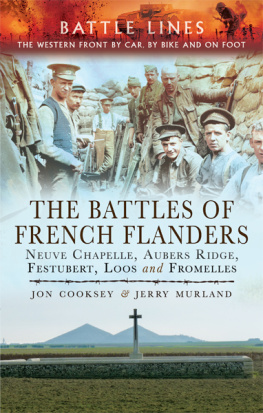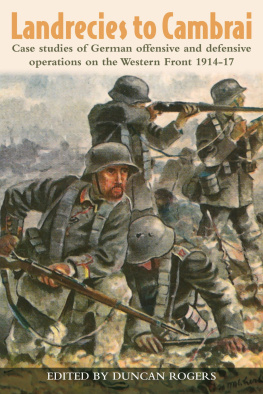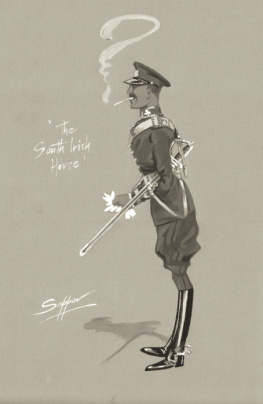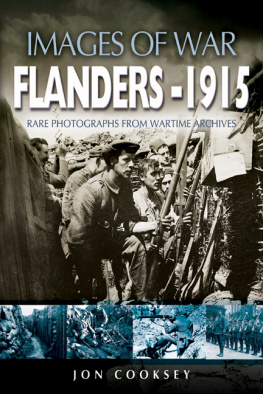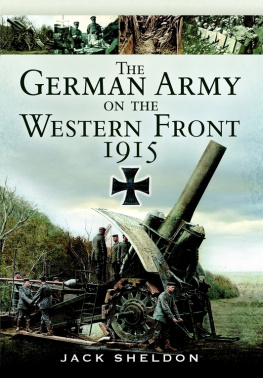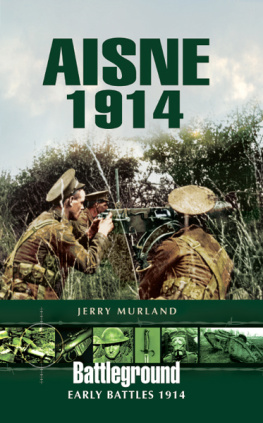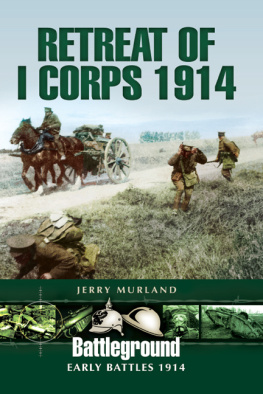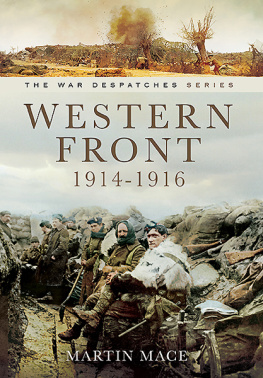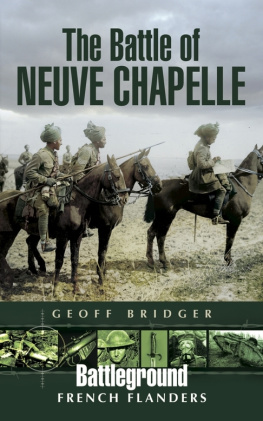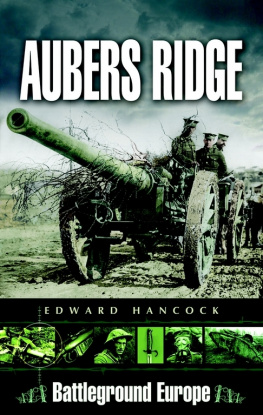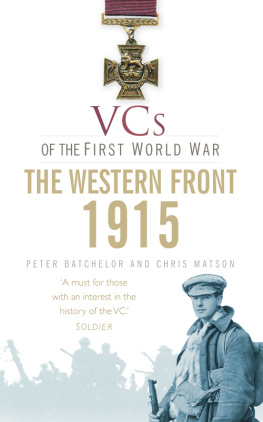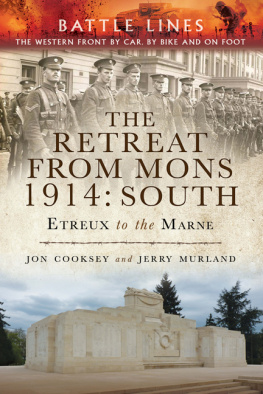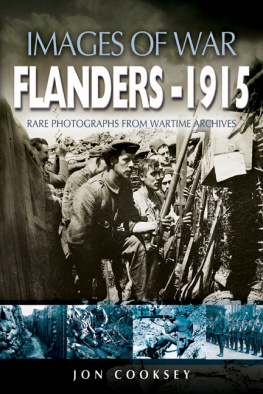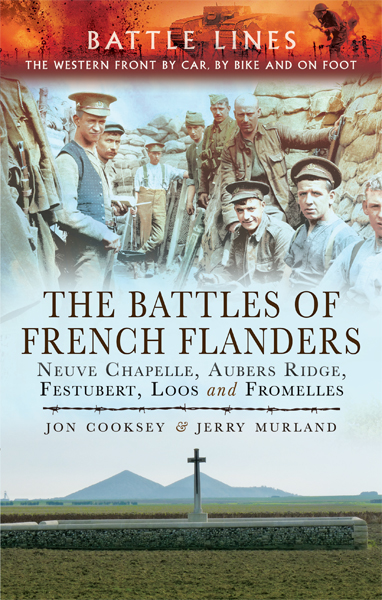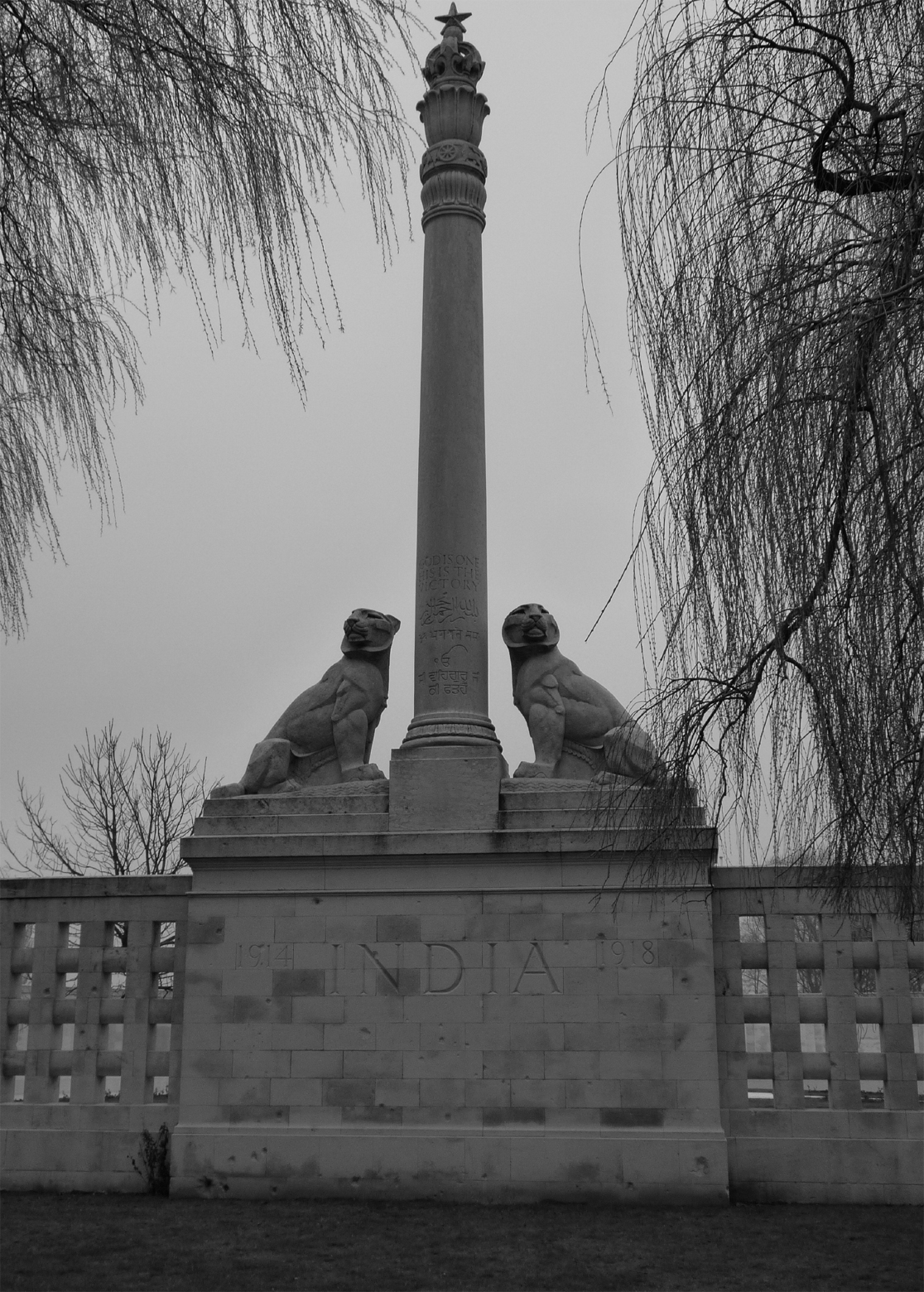
Inspired by the famous inscribed columns erected by the Emperor Ashkora throughout India in the 3rd century BC, the column in the foreground of the enclosure of the Indian Memorial at Neuve Chapelle stands almost 15ft high. It is surmounted by a Lotus capital, Imperial British Crown and the Star of India, whilst two tigers stand sentinel on either side guarding this temple of the dead designed by architect Sir Herbert Baker. Battle damage from the Second World War is clearly visible on the high stone plinth .
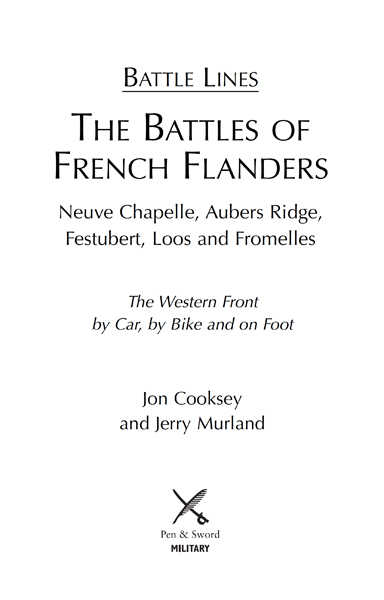
First published in Great Britain in 2015 by
PEN & SWORD MILITARY
an imprint of
Pen & Sword Books Ltd
47 Church Street
Barnsley
South Yorkshire
S70 2AS
Copyright Jon Cooksey and Jerry Murland, 2015
ISBN 978 1 47382 403 4
eISBN 9781473856271
The right of Jon Cooksey and Jerry Murland to be identified as Authors of the Work has been asserted by them in accordance with the Copyright, Designs and Patents Act 1988.
A CIP catalogue record for this book is available from the British Library.
All rights reserved. No part of this book may be reproduced or transmitted in any form or by any means, electronic or mechanical including photocopying, recording or by any information storage and retrieval system, without permission from the Publisher in writing.
Pen & Sword Books Ltd incorporates the imprints of
Pen & Sword Archaeology, Atlas, Aviation, Battleground, Discovery, Family History, History, Maritime, Military, Naval, Politics, Railways, Select, Social History, Transport, True Crime, Claymore Press, Frontline Books, Leo Cooper, Praetorian Press, Remember When, Seaforth Publishing and Wharncliffe.
For a complete list of Pen & Sword titles please contact
PEN & SWORD BOOKS LTD
47 Church Street, Barnsley, South Yorkshire, S70 2AS, England
E-mail: enquiries@pen-and-sword.co.uk
Website: www.pen-and-sword.co.uk
CONTENTS
INTRODUCTION AND ACKNOWLEDGEMENTS
This is the fourth guide in the Battle Lines series and covers the region that is loosely referred to as French Flanders, an area running from the Franco-Belgian border south of Ploegsteert to the Loos battlefields. Often referred to as the Forgotten Front it has, up until now, not benefitted from the popularity that other areas, such as Ypres and the Somme, have enjoyed. Certainly the often flat, featureless and dreary nature of the landscape may not immediately endear it to the battlefield tourist, but it was here that the British Expeditionary Force (BEF) fought several of its most important and bloody battles in 1915, battles which served as rites of passage enabling it to stand alongside its French ally as an equal, if not senior partner, in the struggle against the Germans on the Western Front by the summer of 1916. It became another battleground more than twenty years later in May 1940 when another BEF fought a series of rearguard actions during its retreat to the Channel ports. Physical scars of this fighting still remain to be seen on many of the Great War memorials and the human cost of the struggle still lies alongside the dead of the earlier fighting in several cemeteries in the area.
Although the main emphasis of the guide is on the battles of 1915, we do look at some of the early encounters of 1914 and those of 1916 and late 1917 and, in addition, visit several locations around Festubert and Givenchy where units of the 55th Division fought so tenaciously in April 1918 during the German Lys offensive.
We offer twelve routes around the battlefields roughly arranged in the chronological order in which the battles on them were fought which can be walked, biked or driven and which are supplemented by visits to over forty other sites where we describe what took place and why. The guidebook focuses on what the battlefields look like today and thus you will find very few contemporary Great War photographs. When designing routes we have provided coordinates for the start of each route and looked carefully at ensuring vehicles are not left at isolated points; however, please take the usual sensible precautions when leaving a vehicle unattended by not putting valuables on display but by locking them securely in the boot. On the majority of routes it is possible to cycle and walk, but on some of them cycling is only possible with a good off-road bike. Where possible we have directed the battlefield tourist onto quiet and little-used minor roads as well as local pathways and tracks but be aware that even on the quietest of rural roads there is always the likelihood of meeting unexpected farm machinery.
The depth of historical information devoted to each route has, by necessity, been limited by available space but we have provided enough of an outline around which to develop your understanding of what took place and why. Nevertheless, we have made a number of suggestions for further reading which will widen your appreciation of the events that took place in this sector of the Western Front and also point readers in the direction of other useful guidebooks and publications. Visitors to German, Portuguese and Indian cemeteries and memorials will find the section on equivalent ranks useful when wandering amongst the headstones in the Portuguese cemetery or puzzling to understand the hierarchy of Indian Army ranks.
In acknowledging the assistance of others we must thank Dave Rowland for reining in our sometimes wayward enthusiasm with his common sense approach and practical questioning. We owe a debt of gratitude to ex-Australian War Memorial historian Dr Peter Pedersen for his valued support and to Peter Barton, who was kind enough to discuss some of his ground-breaking research for his new book on Fromelles and loaned maps unearthed in German archives. Thanks also go to Sebastian Laudan in Berlin who once again translated a great deal of German material on our behalf, to Michelle Young, who scrambled around the Loos Memorial for us, and Merlijn van Eijk and Pierre Vandervelden for allowing us to use some of their images.
VISITING MILITARY CEMETERIES
The concept of the Imperial War Graves Commission (IWGC) was created by Major Fabian Ware , the volunteer leader of a Red Cross mobile unit which saw service on the Western Front for most of the period of the war. Concern for the identification and burial of the dead led him to begin lobbying for an organization devoted to burial and maintenance of those who had been killed or died in the service of their country. On 21 May 1917 the Prince of Wales became the president of the IWGC with Fabian Ware (18691949) as its vice-chairman, forty-three years later this became the Commonwealth War Graves Commission (CWGC). Neither a soldier nor a politician, Ware was later honoured with a knighthood and held the honorary rank of major general. The commission was responsible for introducing the standardized headstone which, after the equality of sacrifice, would bring equality in death, regardless of rank, race or creed and it is this familiar white headstone that you will see now in CWGC cemeteries all over the world. In the area covered by this guidebook we have referred to and described forty-one cemeteries containing British and Commonwealth casualties and one French Communal Cemetery. CWGC cemeteries are usually well signposted with the familiar green and white direction indicators and where there is a CWGC plot within a communal cemetery, such as Festubert Communal Cemetery , the familiar green and white sign at the entrance, with the words Tombes de Guerre du Commonwealth , will indicate their presence. The tall Cross of Sacrifice with the bronze Crusaders sword can be found in many cemeteries, such as Guards Cemetery , Windy Corner , where there are relatively large numbers of dead. The larger cemeteries also have the rectangular shaped Stone of Remembrance. A visitors book and register of casualties is usually kept in the bronze box by the entrance but occasionally, as in Cuinchy and Bois-Grenier Communal Cemeteries, the register is kept separately next to the Cross of Sacrifice. Sadly, a number of registers have been stolen and to prevent this from happening you may find a cemetery register is now kept in the local Mairie .

